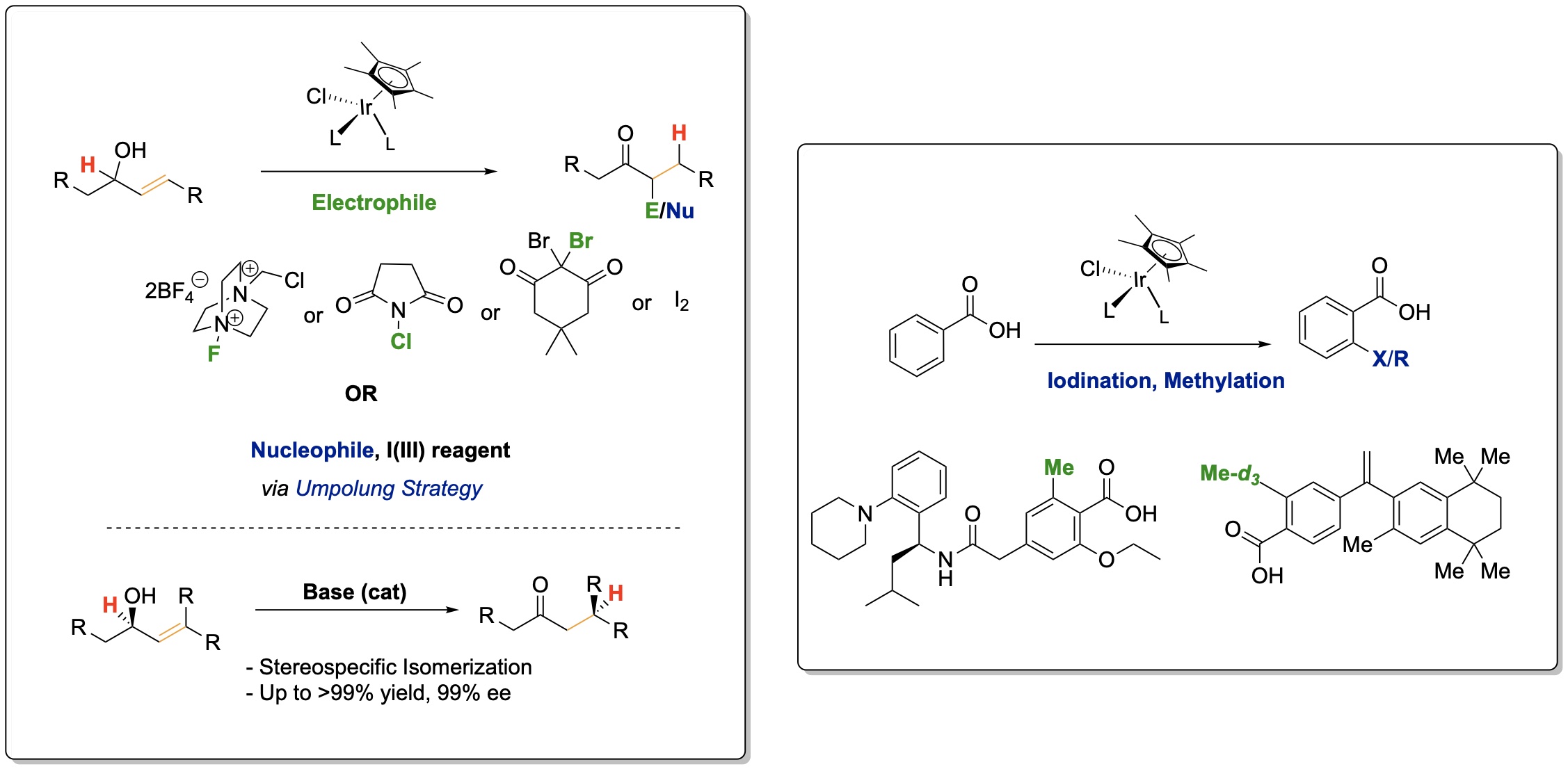Catalytic Methods for the Construction of Halogen-Functionalized Organic Compounds with Application to Late-Stage Functionalizations
Our latest investigations on the development of catalytic methods for synthesizing heteroatom-functionalized building blocks and advanced drug-like molecules will be presented. The use of a family of simple P,N-ligandless complexes, with the general formula [Cp*Ir(III)] have been used for tandem 1,3-hydride shift / functionalization of allylic alcohols, as well as for the functionalization of C-H bonds in benzoic acids. Our attempts to develop asymmetric halogenation reactions resulted on the development of a novel organocatalytic stereospecific reaction mediated by a simple base, and which relies on the in-situ formation of ions pairs with induced non-covalent chirality. The scope as well as the mechanisms of these reactions will be presented.

Selected Group References
[1] Irididium catalysis: Chem. Commun. 2011, 47, 8331-8333; Angew. Chem. Int. Ed. 2013, 52, 6273; Chem. Eur. J. 2014, 20, 10703; ACS Catalysis, 2015, 5, 708; ACS Catalysis 2015, 5, 3704; Chem. Commun. 2017, 53, 9842; ACS Catal., 2018, 8, 920; Chem. Eur. J. 2020, 26, 14978; Nature Commun. 2019, 10, 524450; Chem. Eur. J. 2020, 26, 1018; iScience 2021, 24, 102467; JACS Au 2022, 2, 906.
[2] Base catalysis: J. Am. Chem. Soc. 2016, 138, 13408; ACS Catalysis, 2019, 9, 9134; Org. Lett. 2020, 22, 4123; Org. Lett. 2022, 24, 3867